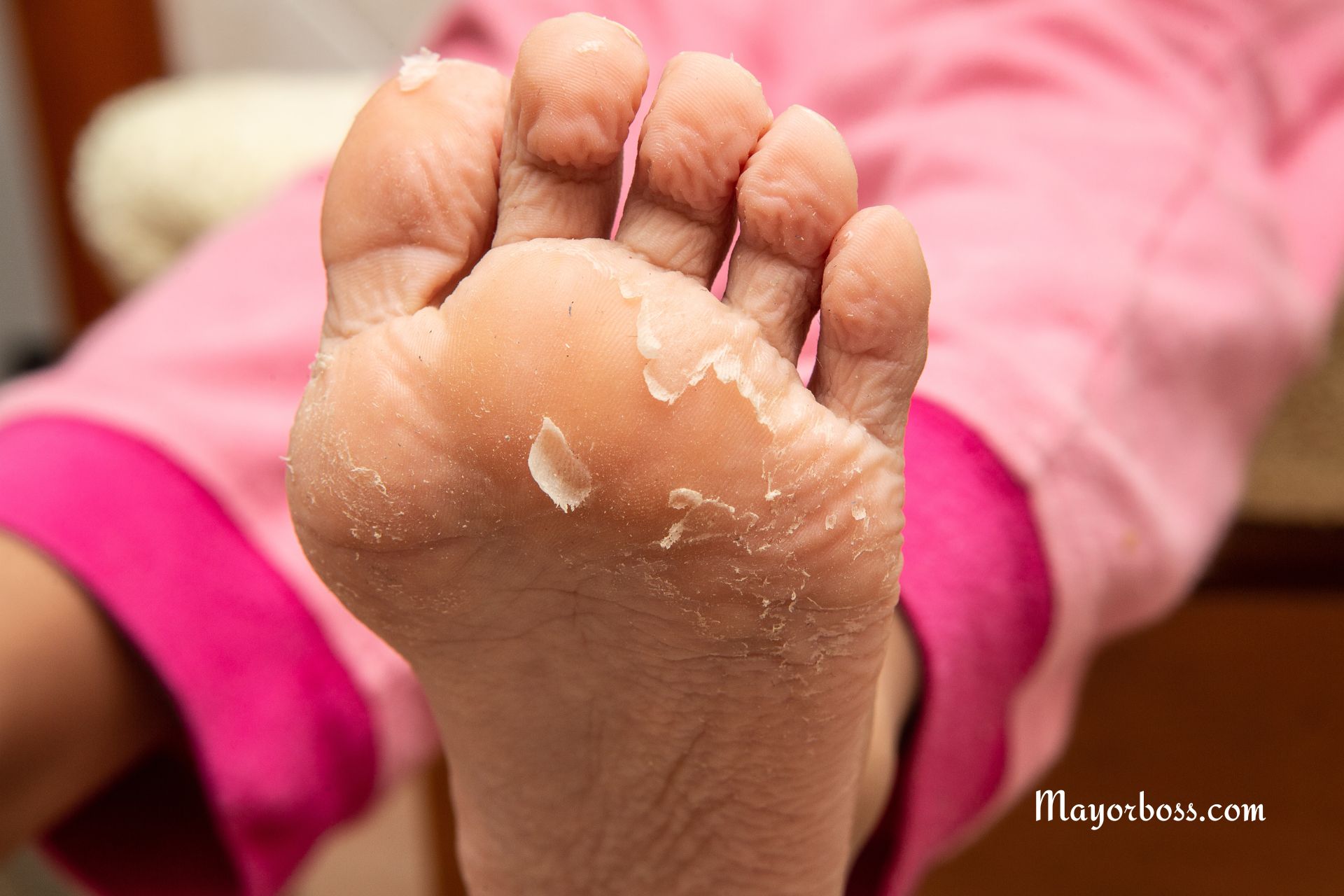Why Are Your Feet and Toes Peeling?
Peeling skin on your feet and toes happens more often than you might think. While it might not seem like a big deal, it can have many causes. Some causes are harmless, while others might require attention from a doctor. Keep reading to learn what could be causing your feet and toes to peel and also how to treat it.
Common Reasons Your Feet and Toes Peel

Athlete’s Foot
An athlete’s foot is one of the most frequent reasons for peeling skin on feet. This fungal infection grows in warm, damp places such as sweaty socks, gym shoes, or shared showers. The Mayo Clinic explains that an athlete’s foot can cause your skin to peel, itch, turn red, and sometimes crack or blister. If left untreated, it can even spread to other parts of your feet or toes.
Dry Skin
Dry skin, also known as xerosis, is another common cause of peeling feet. Cold weather, low humidity, walking barefoot, or frequent exposure to water can all strip your skin of its natural moisture. When this happens, your skin may feel rough, flaky, or itchy. Sometimes, cracks may form, making your feet even more uncomfortable.
Eczema
Eczema is a condition that leads to inflammation and irritation of the skin. The National Eczema Association explains that eczema can make the skin on your feet red, itchy, and prone to peeling or cracking. For some people, eczema on the feet can be triggered by certain irritants like soaps, detergents, or even certain fabrics in socks or shoes.
Psoriasis
Psoriasis is an autoimmune disorder that speeds up the growth of skin cells, causing them to pile up. This can lead to peeling, scaling, redness, and discomfort. On the feet, psoriasis can sometimes look like thickened, cracked patches of skin. Managing psoriasis usually requires both topical treatments and lifestyle changes.
Contact Dermatitis
If your feet come into contact with something that irritates the skin, like a harsh soap or certain materials in your shoes, it can cause contact dermatitis. This condition often results in redness, peeling, itching, and even small blisters. Identifying and avoiding the irritant is key to preventing future flare-ups.
Fungal or Bacterial Infections
In addition to athlete’s foot, other fungal or bacterial infections can also make your skin peel. For example, a bacterial infection might occur if bacteria enter through a cut or blister. These infections can lead to swelling, redness, and peeling, and they may require antibiotics or antifungal treatments to clear up.
Sunburn
Many people forget to apply sunscreen to their feet, but they’re just as vulnerable to sunburn as the rest of your body. A sunburn can cause peeling a few days after the skin has been exposed to harmful UV rays. This peeling happens because your body is shedding damaged skin cells to replace them with new ones.
Too Much Sweating
Excessive sweating, a condition called hyperhidrosis, can keep your feet damp for long periods. This can soften your skin and make it more likely to peel. In addition, constantly sweaty feet provide a perfect environment for fungal infections like athlete’s foot to develop.
Kawasaki Disease
Though rare, Kawasaki disease can cause peeling skin on children’s toes and other parts of their body. This serious condition also involves symptoms like fever, swelling, and red eyes. Since it can affect the heart, Kawasaki disease requires immediate medical attention.
When to Get Help From a Doctor
Most of the time, peeling feet can be treated at home. However, certain symptoms indicate it’s time to seek medical help:
- Severe redness, swelling, or pain
- Blisters or open sores that don’t heal
- Peeling that doesn’t improve with over-the-counter remedies
- Fever, chills, or feeling unwell
If you notice any of these signs, promptly contact a doctor to rule out serious conditions or infections.
How to Treat Peeling Feet
Store-Bought Treatments
- Antifungal creams: These can help with fungal infections like athlete’s foot.
- Moisturizers: Using a rich lotion or foot balm can help restore hydration to dry, peeling skin.
- Hydrocortisone creams: These are effective for eczema or irritation caused by contact dermatitis.
Home Tips
- Wash your feet daily with gentle soap and warm water. Make sure to dry them thoroughly, especially between the toes.
- Avoid walking barefoot in public places like pools or gyms.
- Wear moisture-wicking socks to keep your feet dry and prevent excessive sweating.
- Use a pumice stone or foot scrub to gently remove dead skin, but don’t overdo it.
Prescriptions
If over-the-counter remedies don’t work, your doctor may prescribe stronger treatments. These might include antifungal pills, prescription-strength creams, or even oral medications to manage conditions like psoriasis or severe eczema.
How to Prevent Peeling Feet
To keep your feet healthy and prevent peeling:
- Practice good hygiene: Wash and dry your feet daily to keep them clean.
- Moisturize regularly: Apply a foot cream after bathing to lock in moisture.
- Choose the right shoes: Wear shoes made of breathable materials like leather or mesh to prevent sweating.
- Use protection in public areas: Always wear flip-flops or sandals in communal showers, locker rooms, or pool areas.
- Stay hydrated: Drinking enough water helps keep your skin hydrated from the inside out.
Bottom Line
Peeling feet and toes can happen for a variety of reasons, including dryness, fungal infections, or skin conditions like eczema or psoriasis. While many cases can be treated at home, some may require help from a doctor. If the peeling doesn’t get better, or if you notice other worrisome signs like pain or swelling, make sure to talk to your doctor.
